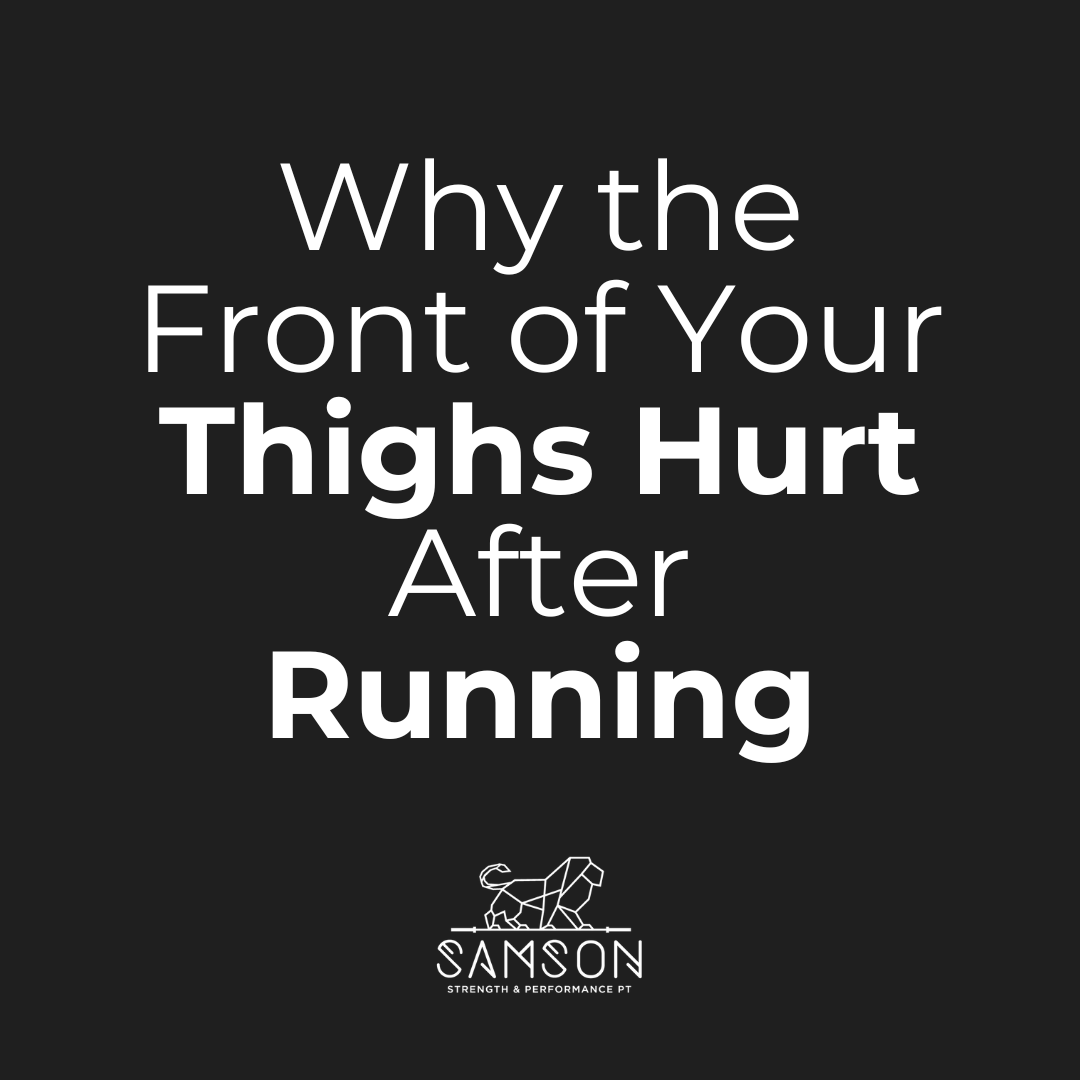Why the Front of Your Thighs Hurt After Running
Do you ever find yourself wondering why the front of your thighs hurt after running?
There can be many different reasons for front of the thigh pain, but we must begin by taking a look at what structures are located in the front of the thigh. The anterior hip musculature includes muscles that bend or flex the hip, in addition to muscles that extend or straighten the knee.
These movements are motions that we repetitively perform during all types of running; whether it is sprinting, tempo running, hill running or running for increased distances. However, certain styles of running can increase the amount of loading on your thigh muscles.
The main muscles that are present in the anterior hip that you use with running are your iliopsoas and quadriceps (rectus femoris, vastus lateralis, vastus medialis, vastus intermedius). The top reasons we see for why the front of your thighs hurt after running are:
DOMS (Delayed Onset Muscle Soreness
Overuse and Overtraining
Running Mechanics
In this blog we will dive deeper into the top reasons why the front of your thighs hurt after running.
1. DOMS (Delayed Onset Muscle Soreness)
When you begin an exercise or activity that is unfamiliar to your body, you can have soreness that peaks anywhere from 12-72 hours after that exercise.
Typical muscular soreness lasts less than 48 hours, but sometimes if your body is not accustomed to a certain exercise you can find yourself experiencing DOMS (delayed onset muscle soreness).
If it is your first time running or perhaps you did your first speed workout of the season, you can find yourself with DOMS in the front of your thighs.
Active recovery is the best way to reduce this tension and soreness. Jumping on a bike at a light to moderate pace can help with recovery and blood flow to reduce your soreness at a faster rate!
Seek medical attention if you notice any severe swelling or changes in the color of your urine as this can be a sign of something more serious.
2. Overuse and Overtraining
Starting a new training program can be a very exciting journey for most runners. There are a couple things that you can do to prevent overuse or overtraining injuries that can cause increased soreness and irritation in your thighs following a run.
Use the 10% rule. A good rule of thumb is to avoid increasing your training volume by more than 10% each week in order to avoid overtraining.
Take rest days! A common error in training volume that we typically see is individuals attempting to run daily accumulate mileage on their legs.
Try running no more than 4-5x per week max and focus on cross training on your off days. Alternate hard training days with easy training days to avoid overloading your muscles and try to perform only one long run per week.
3. Running Mechanics
Running mechanics are something that we only adapt in someone’s training program if they are having pain.
For individuals that have increased thigh pain following a run, you might be overstriding, taking too long of steps, heel striking, dropping your pelvis during swing phase, or bringing your knees too high.
It can be hard to pinpoint one mechanical error in your training so seeking out a skilled running specialist to analyze your running mechanics could be your next step.
When to Seek Medical Help and Schedule with a Performance Physical Therapist
Pain that persists > 48 hours or exceeds more than a dull ache
Swelling, bruising, or difficulty bearing weightbearing and walking
Symptoms that interfere with daily activities or training
If you are uncertain whether you are ramping up your running too quickly and leaving yourself at a high risk of injury
If you are uncertain if your running mechanics are causing you more pain
If you feel like you have no endurance and struggle with maintaining a sustainable heart heart during your runs
Make sure you find a performance physical therapist that is equipped to analyze your gait and won’t tell you to “just stop running.” The reasons for why the front of your thighs hurt after running can rage from typical soreness to something more serious. Make sure you really pay attention to any red flags or warning signs and if you are unsure, seek out a professional who can help.
Happy running!
Running analysis for injured runners in Jacksonville Beach, FL:
We understand that you love to run and consider it a non-negotiable. That's why we're so committed to providing performance physical therapy services that will help you to actually return to your sport, rather than telling you to just stop running.
If you're located in the Jacksonville Beach, FL area and are looking to get treatment for any injuries that you are facing or need help figuring out what to change to allow you to become a better runner, reach out to us. We offer an in depth evaluation and a running analysis to check to see if you have any weaknesses or imbalances in your running. You can read more about our running analysis services here or schedule a free call by clicking here.
Next on your reading list:

